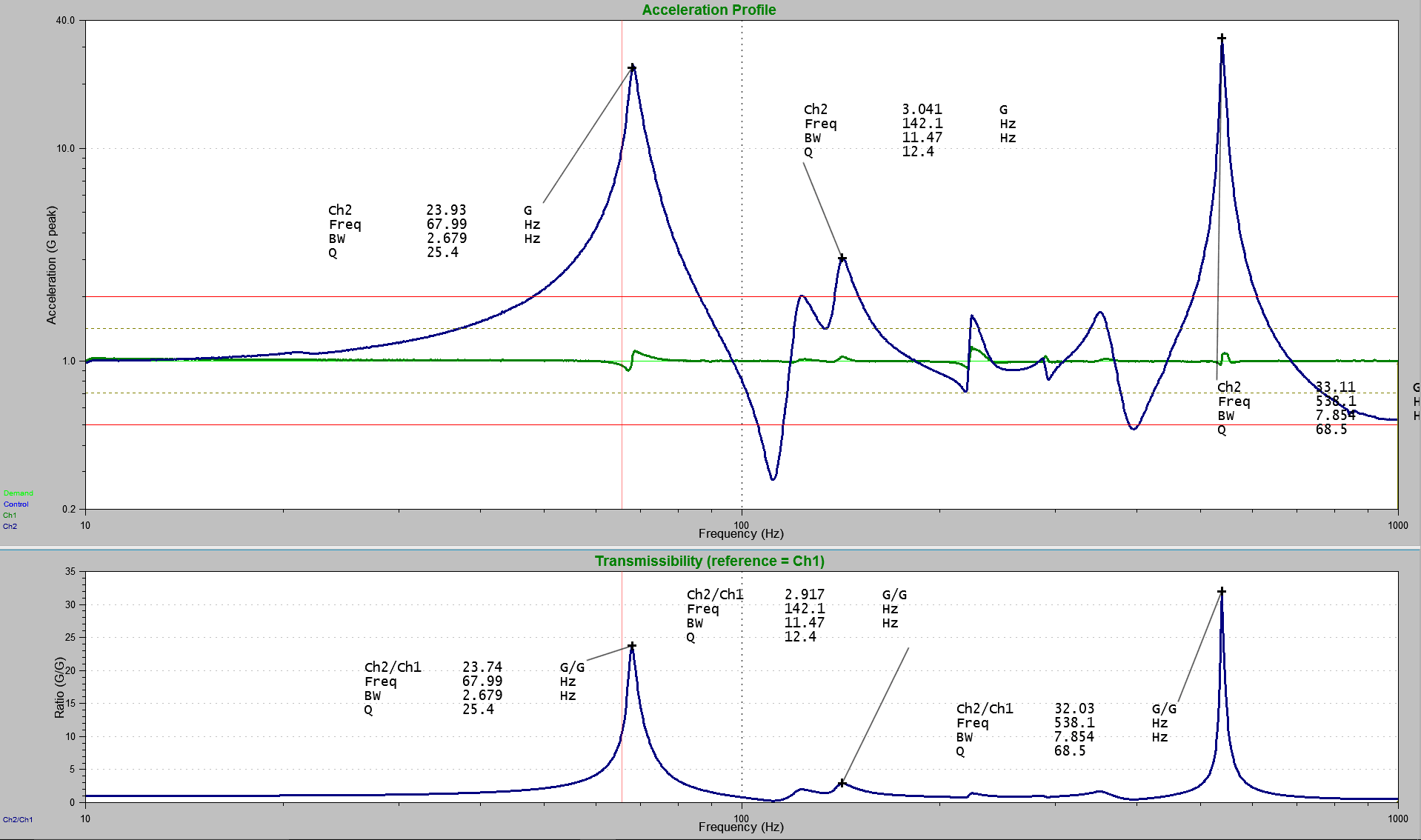Introduction to Resonance
March 29, 2018
Getting Started
Sine Vibration Testing
Sine Sweep Parameters
Resonance
Sine Resonance Track & Dwell
Running a Sine Test
Back to: Sine Testing
Resonance is an important concept in sine testing. Previously, we defined resonance as the state of a system when high vibration levels occur in response to an external stimulus. Resonance occurs when the frequency of the stimulus is the same, or nearly the same, as the system’s natural vibration frequency.
In Figure 4.1, three resonances stand out at 67.99 hertz (Hz), 142.1Hz, and 538.1Hz.
When the shaker vibrated at 538.1Hz (the same as the external stimulus), the end of the beam responded with a much greater vibration. The amplitude of the external stimulus was about 1G. The amplitude of the vibration of the end of the beam vibrated at 33.11G. The frequency of the stimulus was the same, or nearly the same, as the natural vibration frequency of the metal beam.
There are several measurements that describe a resonance: transmissibility, bandwidth, and Q-factor. We will now turn to these measurements.

